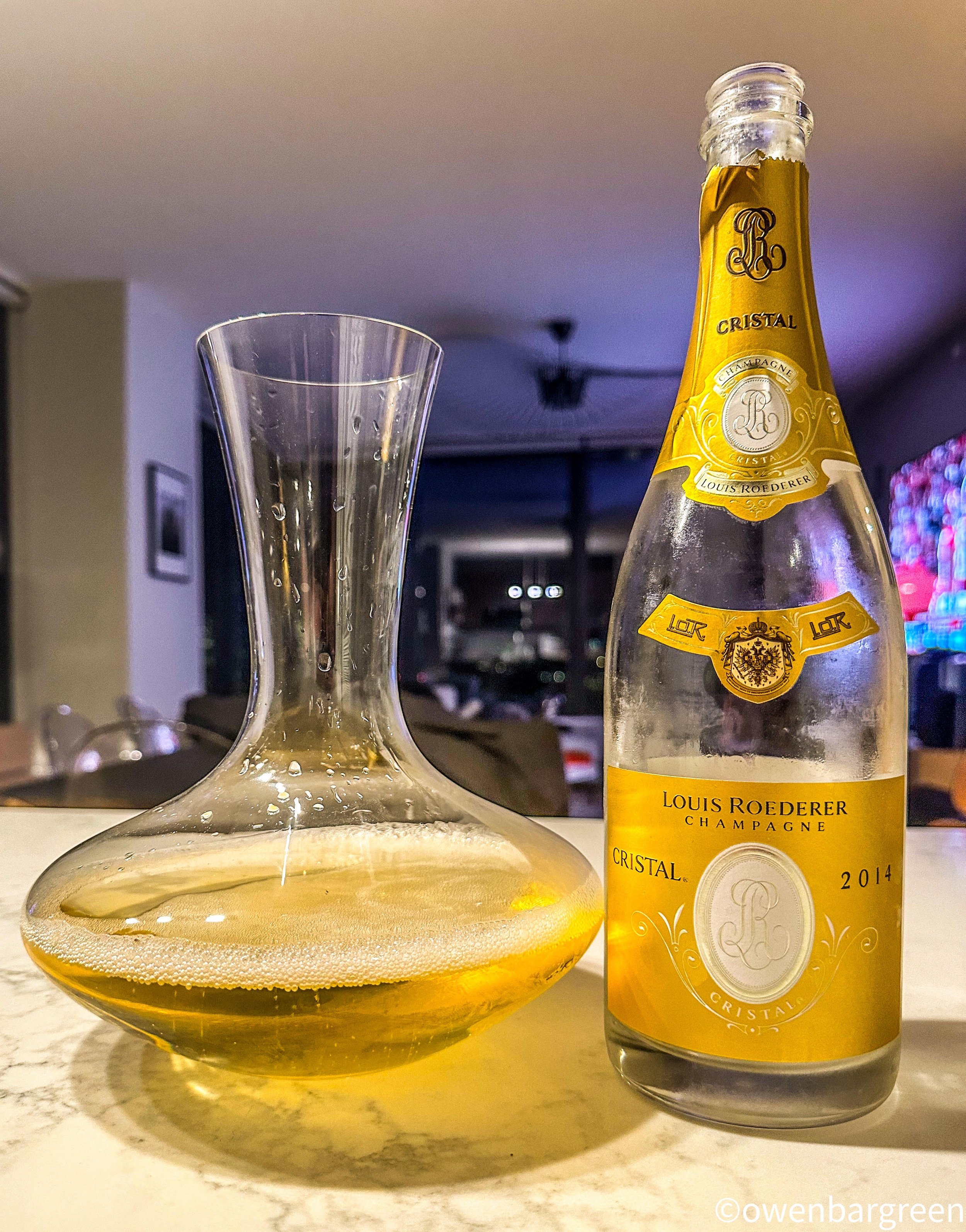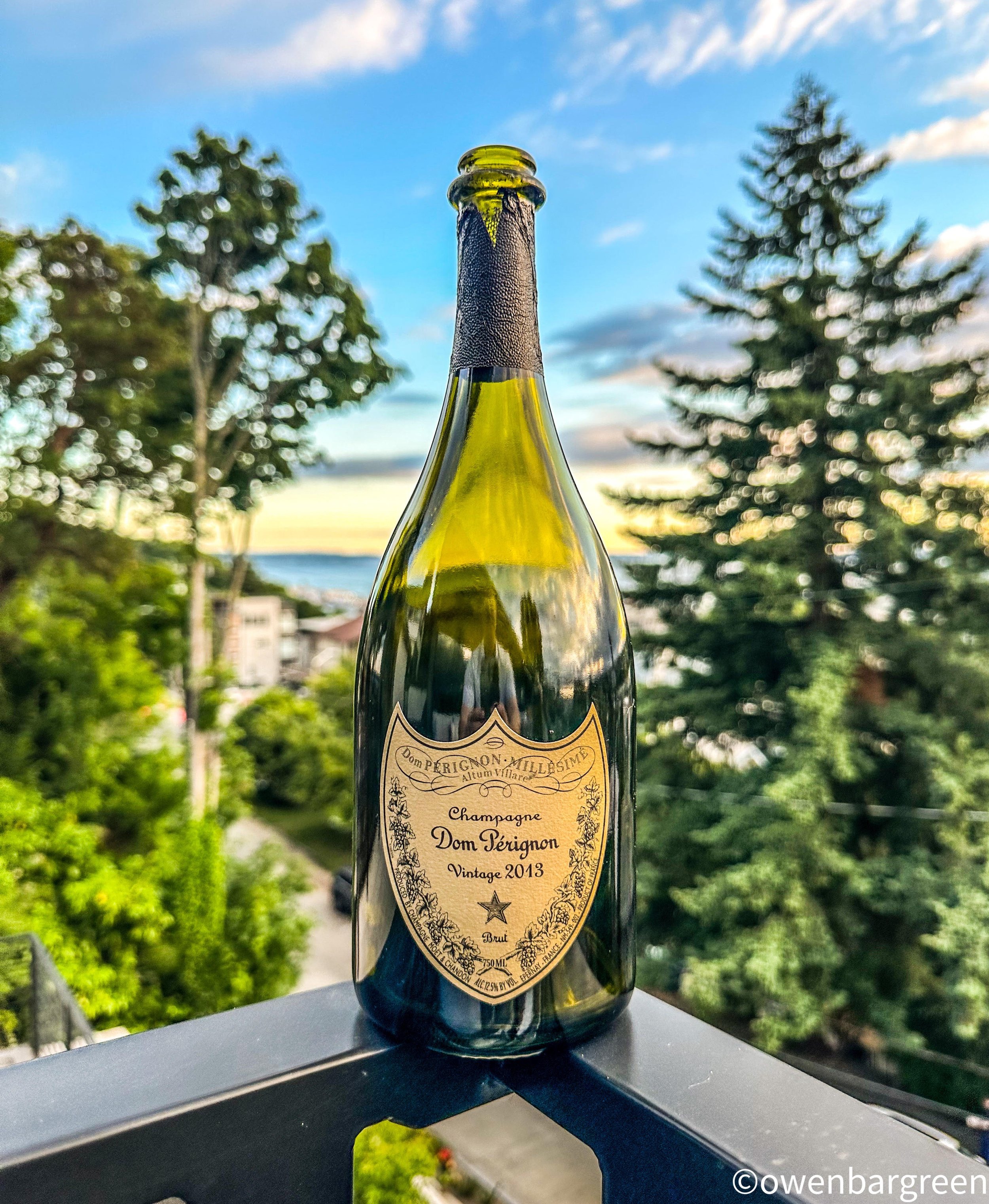Should you or should you not decant champagne? Well, the answer is. . . it depends. Certainly there can be some downsides to decanting champagne. By utilizing a decanter, this may force the wine to lose a small portion of its effervescence, depending on the wine. For those who love the invigorating spritz of a champagne, the loss of some bubbles might not be an enticing experience.
Still, if you decant a youthful champagne very slowly in a narrow carafe you should not lose a considerable amount of effervescence if it is left for 20-30 minutes. I think that with any champagne decant it is imperative to taste wine every several minutes, making sure effervescence is not lost. A major proponent of decanting youthful champagnes, Champagne Billecart-Salmon CEO Mathieu Roland-Billecart explains that “it may be helpful to decant young champagnes or those with a more reductive taste profile to be able to give them a fuller expression with the benefit of oxidation.” Mr. Billecart continues “It is not a must in all circumstances and it very much depends on the profile of the cuvées and one’s personal taste. If you wish to decant, it is best to use a rather narrow carafe with a tight neck to reduce the loss of bubbles.”
I’ve experimented with decanting his 2008 Bllecart-Salmon ‘Cuvee Nicolas-Franciois’ which is one of their top wines that is produced from Grands Crus Vineyards in the Côte des Blancs (Chardonnay) and the Montagne de Reims (Pinot Noir). The 2008 vintage (current release) of this champagne is a slumbering giant upon opening and really needs a lot of air. Using a narrow decanter can greatly improve the flavor and aromatic range of this wine. The decant opens the wine to show its dense fruit and non-fruit flavors brilliantly. I have experimented extensively with using wide and narrow decanters and I certainly agree with Roland-Billecart’s contention that a narrow decanter can do wonders to youthful champagne, helping it blossom into the technicolor butterfly that it is.
There was a major point of contention in my recent New Years post on the 2014 Cristal as I shared a photo with a wide decanter. I am not a proponent of using a wide decanter but in this case I was with a friend who did not have a narrow one — and I tasted the wine every five minutes to check on how it was progressing and levels of effervescence. From my viewpoint a short decant of the 2014 Cristal is imperative. I’ve had this wine three times in the past month from my personal collection and have experimented with length of decant, decanter type etc. From these three separate tastings of the wine, there is absolutely no doubt that the flavor and aromatic density as well as flavor and aromatic complexity improves considerably after a 20-30 minute decant. For me the the question now becomes how can you not decant 2014 Cristal? The wine is reticent and is massively tight upon opening and needs about an hour or more of air without a decant. If I am seated at a restaurant, I quite simply do not have the ability to let the wine sit for an hour or more — unless I am doing a lengthy dinner at a two or three Michelin star restaurant. You do not drink Cristal merely to indulge in its effervescence — you drink Cristal to indulge in its sinfully good range of flavors and aromatics.
Earlier in the year I tried the 2014 Cristal side by side with the new 2015 release [Spring 2023]. The 2015 is also a big and dense edition of this wine but it really benefited from a lot of air and a short decant as well. The decant allowed the wine to fully express itself with its deep orchard fruit flavors and salted nut tones. My feeling is the 2015 Cristal, like the 2014, will continue to benefit from a short decant for several years, unless you set aside several hours to sit with the wine.
I think the question becomes not only whether a decant is necessitated but also what kind of stemware can help the opening up process of such a wine. For me when tasting a top youthful champagne it is imperative to utilize a champagne glass with a large bowl or taste with a white wine glass used for Riesling or Sauvignon Blanc.
Tasting the new 2015 vintage of Cristal, it benefited greatly from a decant. This comes from a hot and dry growing season, as Roederer chef de cave Jean-Baptiste Lécaillon has marvelously captured the warmth of this vintage. Upon opening the 2015 Cristal is very tight and vibrant — hugely mineral-laden once released. Given 30 minutes in the decanter, it really started to become aroused and more opulent in terms of bright citrus and orchard fruit flavors. Over time the generous mouthfeel is really extraordinary and if you pop and pour this champagne you quite simply won’t have a chance to take in this experience. This bigger style of champagne really needs a white wine glass or larger stem that gives it proper air. For Vigneron Christophe Baron, he finds that proper stemware is absolutely necessary for his bigger style of champagne. He prefers to open his champagne and enjoy without a decant using white wine glasses — letting air allow the champagne to evolve. If you love utilizing a champagne flute, Riedel makes champagne glass just for Dom Perignon that are wide and help the wine naturally aerate. I also love their Fatto A Mano champagne glass that is both functional and beautiful.
Oregon bubbles master and microbiologist Rollin Soles first started making sparkling wines more than 20 years ago. He put Argyle on the national map with those outstanding sparkling wines and has been more recently been crafting some of the finest sparkling wines in North America at his ROCO winery. Years ago Rollin was surprised how effective a short decant was with Dom Perignon. He explained “I made a claim to a great Sommelier in NYC that Dom Perignon was not all its reputed to be. He proceeded to show me not just one but TWO (Brut and Brut Rosè) Champagnes that he’d decanted into chilled carafes. The wines were spectacular! I guessed they were anything but Dom Perignon. I found that decanting is a great way to enjoy great sparkling wines especially if you serve with the carafe cold.”
Certainly some bottles of Dom Perignon do not really need a decant. This is true with older wines and I certainly found this to be the case with the latest editions of ‘P2.’ Tasting the 2004 ‘P2’ this was a remarkable wine right out of the gate and the same was true with an older ‘P2’ from the epic 2000 vintage. The 2000 was astonishingly good and continued to evolve over the first hour with air, immediately gratifying with its truffle, melon, fig and citrus fruit notes.
Washington sparkling wine producer Chris Sherry of Elentone agrees that a short decant can enhance a youthful wine. “I think people sometimes forget sparkling wine is wine and therefore comes with many of the same traits” he explains. “Some sparkling wines can be made in a reductive manner or other way which means they might need decanting, particularly when young.”
One of my favorite wines of the world is the ‘Grand Siecle’ by Laurent-Perrier. Over the past year I have tasted roughly a dozen bottles of Laurent-Perrier ‘Grand Siecle’ editions 25 and 26. The 25 has a base from the 2008 vintage and is still extremely tightly wound from this beautiful vintage, needing about 20 minutes in the decanter to be fully aroused. Standing alone without a decant, I’ve found that it needs more than an hour of air right now and greatly benefits from a 30 minute decant in a narrow carafe. The same is true with the incredible ‘Grand Siecle’ 26 ed. This wine if standing alone requires more than an hour to be fully expressive aromatically and flavors wise. However, after 30 minutes in the decanter it is really showing beautiful flavor and aromatic range.
Many restaurants are open to decanting champagne. During my last several visits to Bourbon Steak Seattle (which recently closed) their wine director, Jonathan Valencia, decanted Krug Grand Cuvee ed.170, 2012 and 2013 Dom Perignon and 2014 Delamotte Blanc de Blancs. Top winemakers that enjoy champagne also are known decant their vintage champagnes. I recently enjoyed the 2014 Cristal and Laurent-Perrier ‘Grand Siecle’ No. 26 which were both decanted together with a famed Washington winemaker over the Christmas holiday.
The sommelier community is generally open to decanting champagnes depending on the right wine. Master Sommelier Nick Davis admits that his “feelings regarding decanting are varied, and never follow a strict rule.” He noted “For all wines, decanting can offer numerous benefits.” He continues “Specifically on the topic of Champagne, decanting can be useful for raising the temperature of the wine, removing the bubbles, and potentially enhancing the aromatic possibilities of the wine. Oxidative styles such as those by Jacques Selosse and Frédéric Savart are better suited to be served from the bottle, in contrast to more-reductive cuvées like those by Ruinart, Salon, and Pierre Gimonnet. Many wine drinkers will find dismay with a loss of bubbly effervescence, so the technique of decanting Champagne is best employed when permission is granted by the guest.” Master Sommelier Davis agreed that a proper decanter is imperative in this case. “Narrow-gauge decanters such as the Riedel Amadeo or Zalto Carafe are useful in controlling the loss of gas, while still encouraging the benefits of some added air and increased temperature.” Finally Davis states “I approach decanting the decision on a bottle-by-bottle basis, and not with any automatic rules or guidelines. A useful tip is to take a small taste of the wine when it is new and fresh from the bottle, to estimate if decanting for aromatics will even be necessary. Should the wine feel shut-down, shy, or overly reductive in flavor, then some extra air is in order.”
Advanced sommelier and former wine director at Bourbon Steak Seattle, Paul Swanson, believes that decanting champagne depends on the right wine and the right situation. “Any true wine connoisseur’s goal is to maximize how well a wine can show once that cork is popped” he said. “A younger wine that just aged anaerobically and/or underwent autolysis for years can benefit from a brief decant to allow oxygen contact to the wine to maximize its showing potential. This can enhance aromatics and overall enjoyment, especially if the wine is consumed rather quickly or shared with a larger group of individuals.” Similar to Master Sommelier Davis, Swanson finds that a decant also depends on the winemaking, noting “Seeing that the wine underwent secondary fermentation and many years of lees aging in the bottle, it can hold its bubbles and effervescence much more than a sparkling wine that was forced carbonated or has gone through the brief Charmat Method. You can have a wine with trapped Sulfides or reductive elements that can benefit from a brief aeration. Champagne aged under brand new oak or many, many years of lees contact welcomes air contact.”
In short, I’m a firm believer in decanting youthful champagnes based on my experience of experimenting with decant and non-decant with many of the world’s top bottlings. This is contention I make based on my individual experience, theory and palate, but much of the sommelier and winemaking community also agrees that decanting a youthful champagne can be really important for the wine to show best in terms of flavors and aromatics. Try it for yourself with a youthful champagne and I think you will be impressed with how the decant enhances your wine experience.








